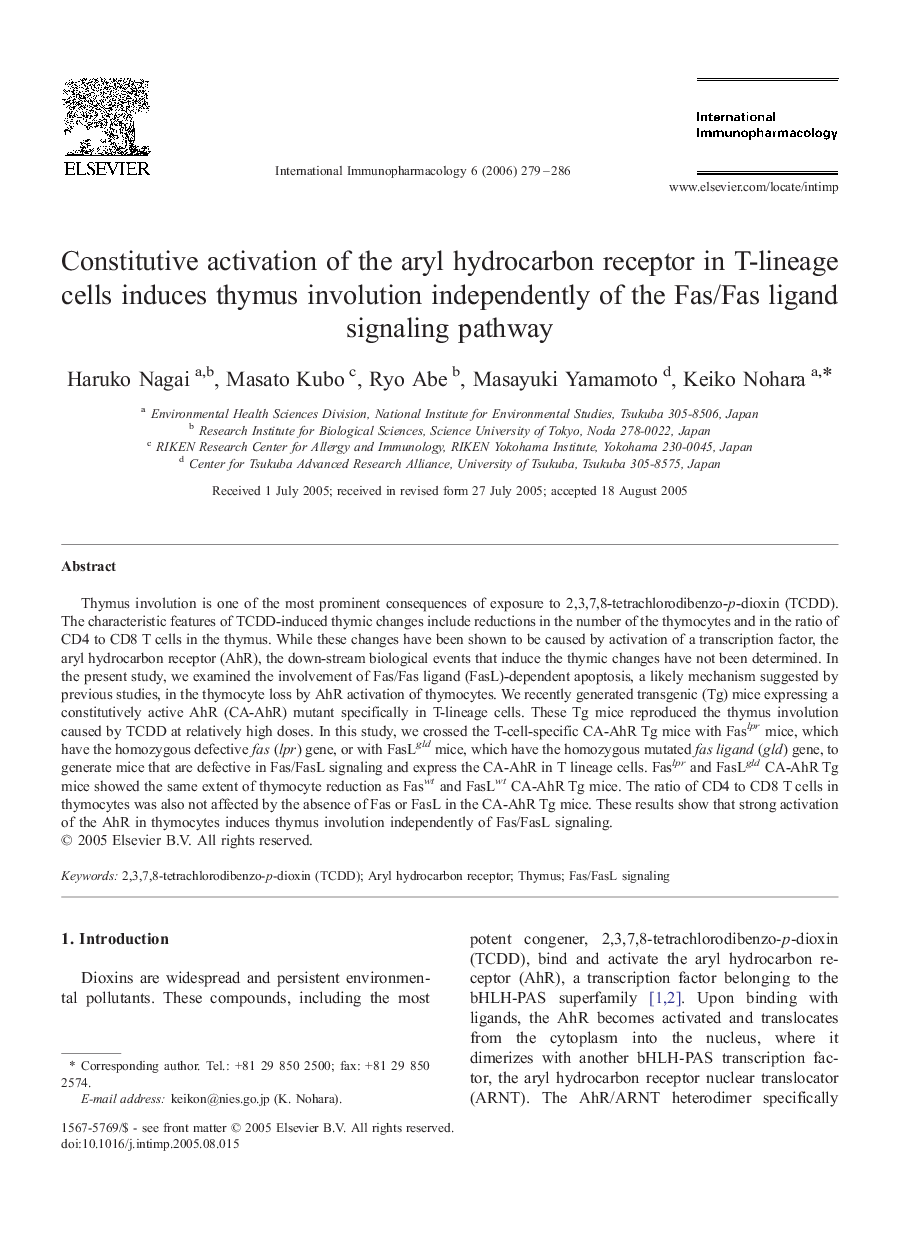| Article ID | Journal | Published Year | Pages | File Type |
|---|---|---|---|---|
| 2542279 | International Immunopharmacology | 2006 | 8 Pages |
Thymus involution is one of the most prominent consequences of exposure to 2,3,7,8-tetrachlorodibenzo-p-dioxin (TCDD). The characteristic features of TCDD-induced thymic changes include reductions in the number of the thymocytes and in the ratio of CD4 to CD8 T cells in the thymus. While these changes have been shown to be caused by activation of a transcription factor, the aryl hydrocarbon receptor (AhR), the down-stream biological events that induce the thymic changes have not been determined. In the present study, we examined the involvement of Fas/Fas ligand (FasL)-dependent apoptosis, a likely mechanism suggested by previous studies, in the thymocyte loss by AhR activation of thymocytes. We recently generated transgenic (Tg) mice expressing a constitutively active AhR (CA-AhR) mutant specifically in T-lineage cells. These Tg mice reproduced the thymus involution caused by TCDD at relatively high doses. In this study, we crossed the T-cell-specific CA-AhR Tg mice with Faslpr mice, which have the homozygous defective fas (lpr) gene, or with FasLgld mice, which have the homozygous mutated fas ligand (gld) gene, to generate mice that are defective in Fas/FasL signaling and express the CA-AhR in T lineage cells. Faslpr and FasLgld CA-AhR Tg mice showed the same extent of thymocyte reduction as Faswt and FasLwt CA-AhR Tg mice. The ratio of CD4 to CD8 T cells in thymocytes was also not affected by the absence of Fas or FasL in the CA-AhR Tg mice. These results show that strong activation of the AhR in thymocytes induces thymus involution independently of Fas/FasL signaling.
